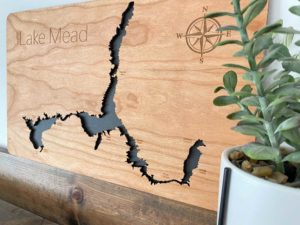
Boating Lake Mead Amidst a Drought
Lake Mead National Recreation Area in Arizona and Nevada is
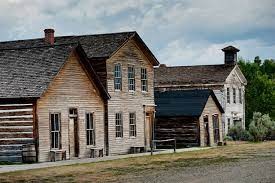
Spooky, haunted, eerie, and creepy may be some of the first words that come to mind when you hear “ghost town.” But what about history, ancestors, connection, curiosity, or knowledge? Depending on your perspective, US ghost towns can offer so much more than a haunted ghost story. So what is a ghost town? A ghost town is any abandoned city, town, or village, that usually has visible remains. And believe it or not, there are thousands of them in the US alone.
What leads to a ghost town? How does a lively and active town suddenly die? This largely depends on why it was settled in the first place. Most US ghost towns were built based on local economic activities. The discovery of gold, silver, coal, or other natural resources is one of the most common founding reasons. Mines and mills became the focal point for entire towns when these discoveries were made. But just as quickly as they were discovered, they could be depleted. As soon as the natural resources ran out, the miners would move on to another town, leaving everything they just built behind.
Many boom towns relied on highways and railroads for their success. The roads and trains brought traffic and supplies to their towns, and without them they would not survive. Oftentimes, major highways and railroads were re-routed and rebuilt, or replaced with new ones in different locations, leaving these towns “stranded” in the middle of nowhere. When this happened, the locals would have no choice but to settle elsewhere, leaving their once thriving town behind.
One of the most unique causes of ghost towns is the construction of dams. One example of this is the US ghost town of Ferguson, South Carolina. Ferguson was originally established as a successful lumber town. But after questionable business operations exploited over 350 workers, the operations were shut down in 1915. In the 1930’s, the Santee Dam was constructed, and any remaining residents were forced to leave. The dam completely covered Ferguson, rendering it forever uninhabitable. Visiting Ferguson is unlike visiting any other ghost town. The town is only accessibly by water, and what you’ll see of the remains is halfway submerged.
Natural disasters are another leading cause of the creation of ghost towns. Repeated fires and floods have forced the desertion of many formerly successful communities. Centralia, Pennsylvania, for example, was instantly rendered useless after a fire swept through the local coal mine, and never stopped burning. To this day, the fire burns on underneath the town, making it a one of a kind experience for visitors.
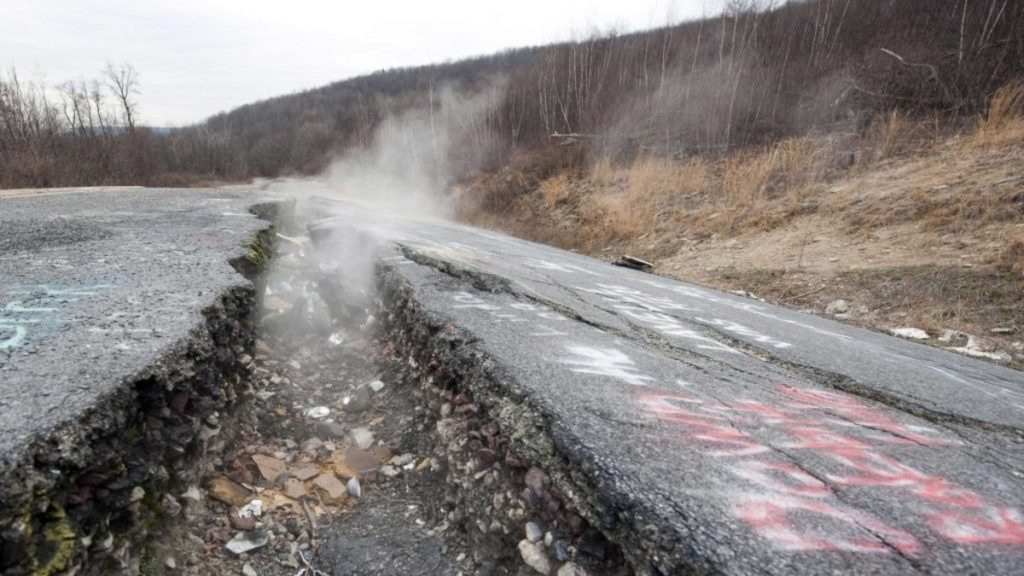
While ghost towns certainly have the potential to feel creepy and haunted (how could an underwater town, and a town with smoke constantly seeping through its cracks not feel eerie?), they also have the potential to unlock invaluable insights to our past. Learning what can cause a settlement to fail, and what can cause it to thrive is perhaps the most obvious lesson we would be smart to learn from ghost towns.
While it is true that mining resources running dry, rerouted railroads, and natural disasters were partially to blame for the failure of many of these settlements, it’s not always quite as black and white as it seems. Poor planning, lack of community cohesiveness, and exploitation of natural resources, are all factors to be considered. By analyzing the abandonment of these towns, we can help ensure that our modern cities do not fall to the same fate as these US ghost towns.
In the last decade, we’ve gotten smarter and realized that there’s a lot to gain from preserving ghost towns. Many ghost towns are now protected and run on a state or national level. To help build unified communities, a connection to the past and to our ancestors, and to honor and learn from the past, many of these organizations now have yearly celebrations. Bannack, Montana, for example, holds “Bannack Days” every July, with historic displays, re-enactments, and fun activities for the whole family. Many of the major US ghost towns are open year-round to the public, with daily educational tours, museums, visitor centers, and even overnight accommodations.
No matter which US ghost town you visit, the possibilities for adventure, knowledge, fun, connection, and relaxation are endless.
“Those who do not learn from history are doomed to repeat it.”
-George Santayana
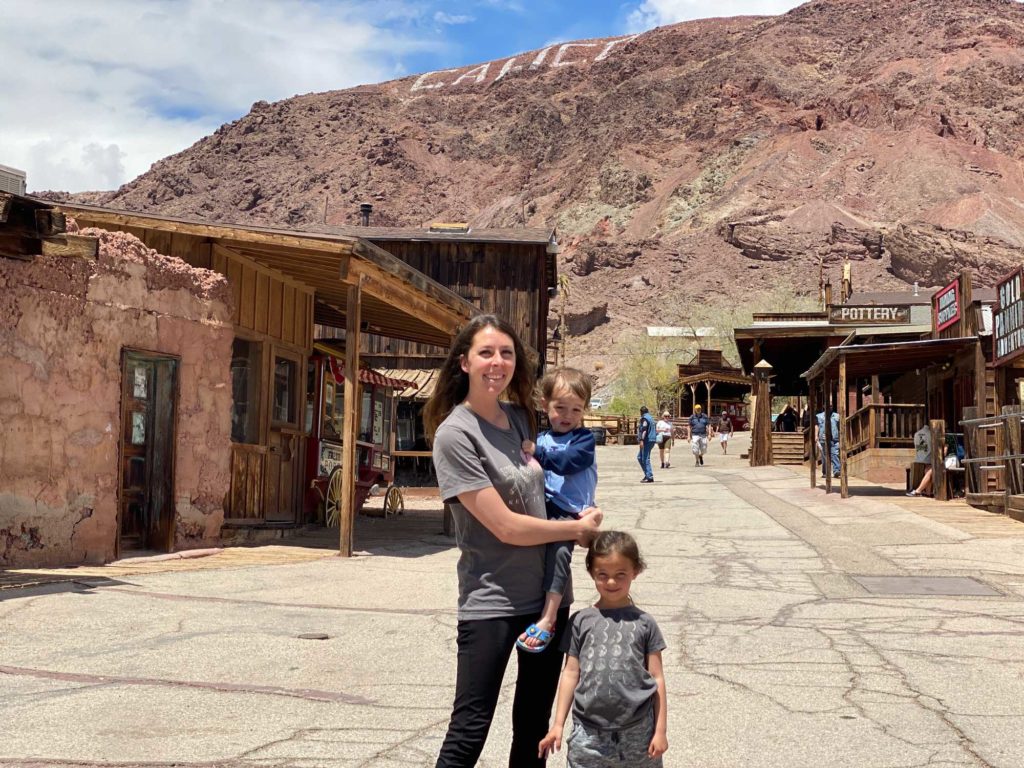
With thousands of ghost towns dotting the country, it can be hard to know which ones merit a visit. We’ve narrowed the list down for you, and came up with this list of the top 50 US ghost towns. Some of the criteria we used when considering which ghost towns to include are public accessibility, structures still standing, available amenities, and unique features.
And if you’re serious about visiting and learning from US ghost towns, we also designed this “Top 50 US Ghost Towns” bucket list board! The board features all 50 of the ghost towns from the list below, in a beautiful and fun to display way. Each piece is laser engraved and removable, so you can track which ghost towns you’ve visited and which ones you still need to get to. Whether you visit one ghost town, or 50, we hope you are able to fully immerse yourself in the experience and enjoy what the past has to offer!
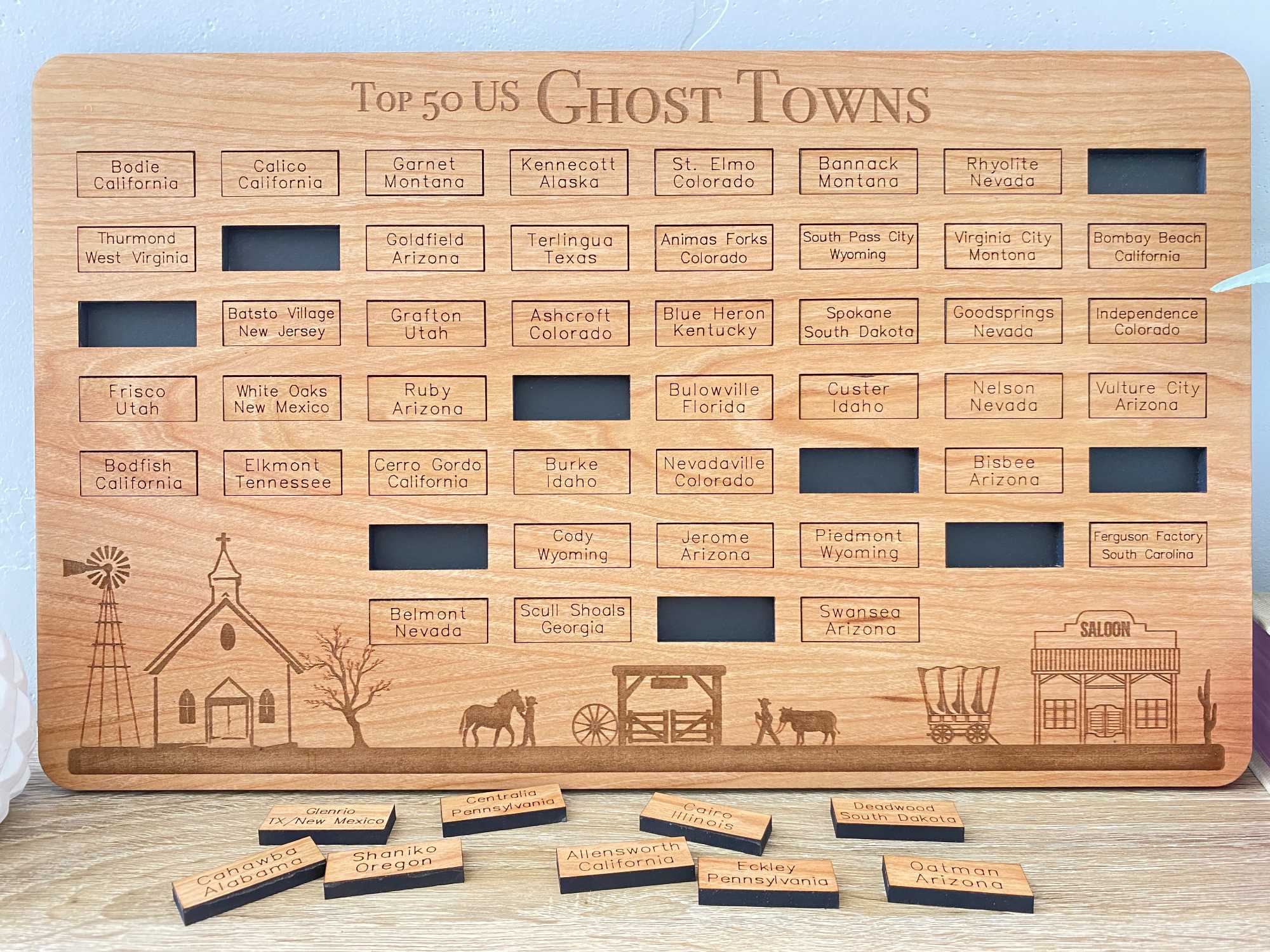
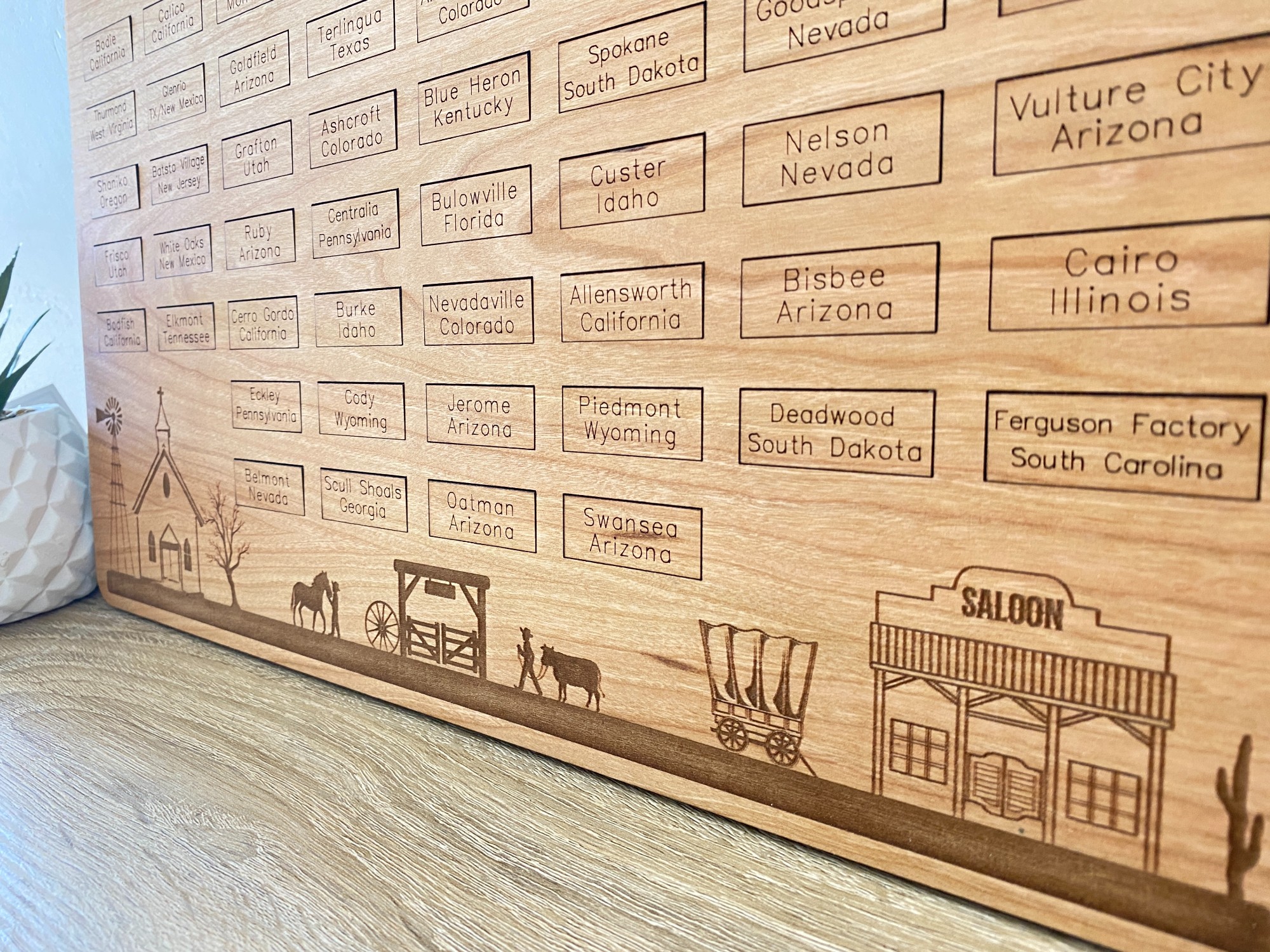
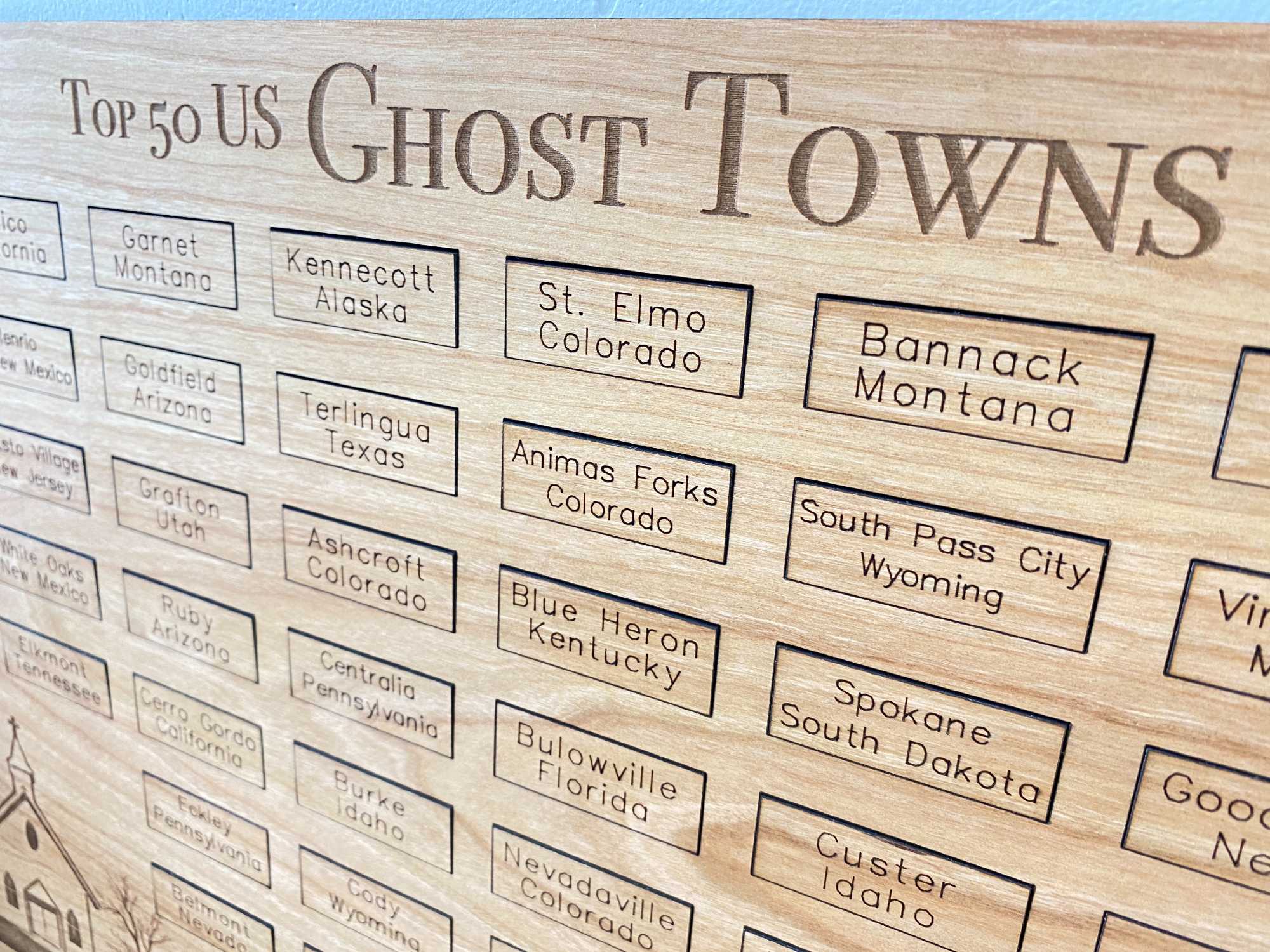
| GHOST TOWN | OVERVIEW |
| 1. Bodie, California | Gold mining town, deserted in the 1940’s |
| 2. Calico, California | Silver mining town, deserted in the 1890’s |
| 3. Garnet, Montana | Gold mining town, deserted in early 1900’s |
| 4. Kennecott, Alaska | Copper mining town, deserted in 1938 |
| 5. St. Elmo, Colorado | Railroad hub town for gold and silver mines, deserted in 1922 |
| 6. Bannack, Montana | Gold mining town, deserted in the 1950’s |
| 7. Rhyolite, Nevada | Gold mining town, deserted in 1916 |
| 8. Cahawba, Alabama | Alabama’s original state capital, deserted in the 1860’s |
| 9. Thurmond, West Virginia | Coal mining town, deserted in the 1940’s |
| 10. Glenrio, Texas/New Mexico | Highway town, deserted in 1975 |
| 11. Goldfield, Arizona | Gold mining town, deserted in the 1890’s |
| 12. Terlingua, Texas | Mining town, deserted in the 1940’s |
| 13. Animas Forks, Colorado | Mining town, deserted in the 1910’s |
| 14. South Pass City, Wyoming | Gold mining town, deserted in the 1940’s |
| 15. Virginia City, Montana | Gold mining town, deserted in the 1870’s |
| 16. Bombay Beach, California | Salton Sea Beach town, deserted in the 1980’s |
| 17. Shaniko, Oregon | Wool and wheat town, deserted in the 1930’s |
| 18. Batsto Village, New Jersey | Iron and glass production town, deserted in the late 1800’s |
| 19. Grafton, Utah | Cotton farming town, deserted in the 1940’s |
| 20. Ashcroft, Colorado | Silver mining town, deserted in the 1880’s |
| 21. Blue Heron, Kentucky | Coal mining town, deserted in the 1960’s |
| 22. Spokane, South Dakota | Silver mining town, deserted in the 1940’s |
| 23. Goodsprings, Nevada | Mining town, deserted in the 1940’s |
| 24. Independence, Colorado | Gold mining town, deserted in the 1890’s |
| 25. Frisco, Utah | Silver mining town, deserted in the 1920’s |
| 26. White Oaks, New Mexico | Gold mining town, deserted in the 1910’s |
| 27. Ruby, Arizona | Mining town, deserted in the 1940’s |
| 28. Centralia, Pennsylvania | Coal town still burning, deserted in 1962 |
| 29. Bulowville, Florida | Plantation town, deserted in 1836 |
| 30. Custer, Idaho | Mining town, deserted in the early 1900’s |
| 31. Nelson, Nevada | Mining town, deserted in the 1940’s |
| 32. Vulture City, Arizona | Gold mining town, deserted in the 1940’s |
| 33. Silver City (Bodfish), California | Collection of local preserved mining town buildings |
| 34. Elkmont, Tennessee | Logging town, deserted from 1932-1992 |
| 35. Cerro Gordo, California | Silver mining town, deserted in the 1930’s |
| 36. Burke, Idaho | Mining town, deserted in the 1980’s |
| 37. Nevadaville, Colorado | Gold mining town, deserted in the 1930’s |
| 38. Allensworth, California | African American community, deserted in the 1930’s |
| 39. Bisbee, Arizona | Mining town, modern city combined with old mining town |
| 40. Cairo, Illinois | River town with a history of racial violence, largely deserted |
| 41. Eckley, Pennsylvania | Coal mining town, largely deserted in the 1920’s |
| 42. Cody, Wyoming | Collection of local preserved mining town buildings |
| 43. Jerome, Arizona | Mining town, deserted in the 1940’s |
| 44. Piedmont, Wyoming | Railroad town, deserted in the 1930’s |
| 45. Deadwood, South Dakota | Gold mining town, deserted in the 1940’s |
| 46. Ferguson, South Carolina | Lumber town, covered by a lake in the 1930’s |
| 47. Belmont, Nevada | Silver mining town, deserted in the 1890’s |
| 48. Scull Shoals, Georgia | Mill town, deserted in the 1920’s |
| 49. Oatman, Arizona | Mining town, deserted in the 1920’s |
| 50. Swansea, Arizona | Mining town, deserted in the 1930’s |
Here at Whake Studios, our dream is to support you in living your dreams! Whether you want to visit every US national park, complete 52 hikes in a year, or experience the fine dining of Michelin Star restaurants, we’ve got you covered. So get out there and see the world. Stop dreaming, start living.
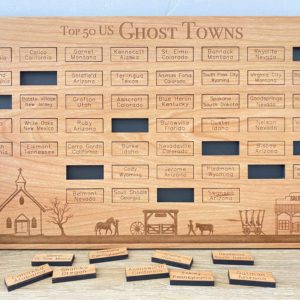

Lake Mead National Recreation Area in Arizona and Nevada is
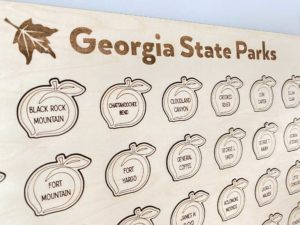
With 45 state parks, Georgia has so much beauty to

Best Places to Visit in Alaska Alaska is considered a
FREE SHIPPING ON ALL ORDERS! Dismiss
Sign up to enable discounted rates!